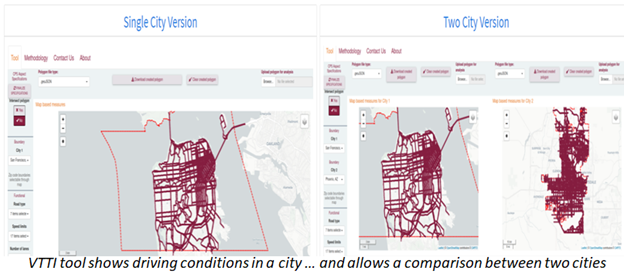
A new online tool, the Operational Design Domain Element Quantification Prototype, was developed and made available for use by Virginia Tech Transportation Institute (VTTI). NIST funded the tool’s development through a cooperative agreement with VTTI and collaborated on its research.
The tool helps researchers and industry practitioners to understand and quantify automated driving operating conditions in a city, community, or region. These conditions are described in the Operational Design Domain (ODD) in which an automated vehicle is designed to operate. The ODD of an automated vehicle provides a description of its environmental, geographical, and other restrictions, as well as applicable constraints, such as permissible speeds, geographic areas, road types, and environmental conditions. The ODD is used in the design, build, and test of Automated Driving Systems (ADS). Ultimately, the tool helps to provide a foundation for assessing the safety of an ADS-equipped vehicle.
The VTTI tool, supported by NIST, offers a data-driven approach for choosing where to test an automated vehicle, based on its ODD, and is intended for users in government, industry, and academia. The tool makes use of NIST’s Cyber-Physical Systems Framework and is designed to show the ODD elements’ interconnectedness. The tool provides users with access to a set of key ODD elements in 30 major U.S. cities. For example, the tool shows ODD elements such as monthly weather conditions, route types, crash data, and more. Users can use the tool to:
- Develop ODD definitions suitable for a market or region
- Quantify conditions facing ADS-equipped vehicles in any of 30 major U.S. cities
- Explore how changing ADS challenges impact ODD specifications
- Demonstrate extensions of ODD specifications using NIST’s CPS Framework

